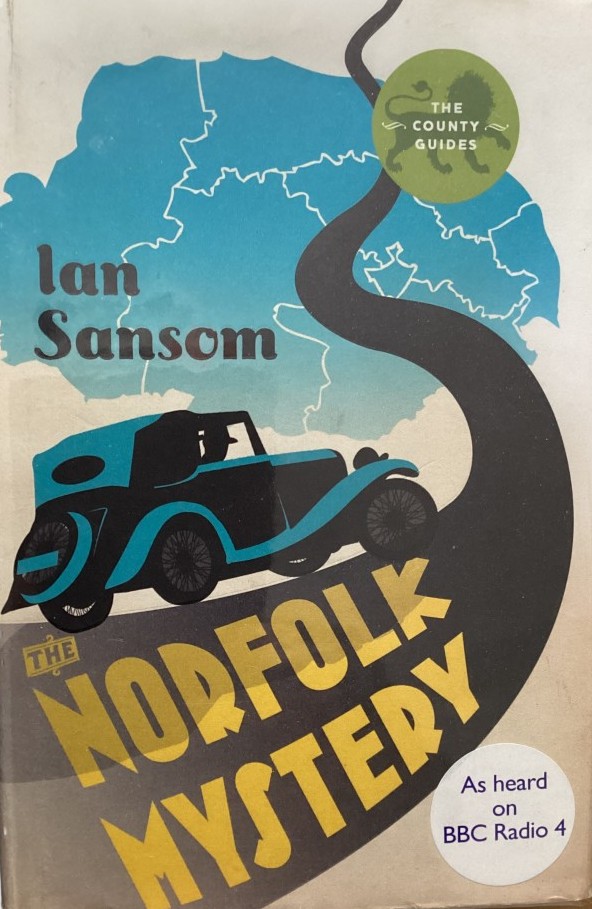Inspiring Older Readers
 posted on 05 Jun 2025
posted on 05 Jun 2025
The Norfolk Mystery by Ian Sansom
So where do you stand on the issue of ‘comic’ thriller/detective fiction? I know that for some dedicated crime aficionados they are anathema – a sort of detective/thriller kryptonite, sapping the strength and purpose of the genre. Me, I’m not so fussy, I quite enjoy a bit of well-done, witty teasing and, if you’re of like mind to me, you may well enjoy The Norfolk Mystery by Ian Sansom.
This is the first of a series called ‘The Country Guides’ which are set in the years before the Second World War and which are based on the premise that an eccentric, autodidactic author, Swanton Morley will travel the country, county by county, with the aim of producing a definitive set of travel guides. Needless to say, each county stop involves the ‘Professor’ in a mystery of some kind.
Let’s get the plot out of the way first because it’s really as thin as tissue paper and won’t be the reason you’ll want to read this book or subsequent ones in the series. Stopping at a remote but renowned church in Norfolk, Morley and his compatriots (more about this in a while), discover the local vicar hanging from the church bell ropes having seemingly committed suicide. Not much longer after, the vicar’s distressed foreign housekeeper also commits suicide by self-immolation. Were these really suicides or were these individuals effectively forced into their actions by some other hand or hands?
Leaving out the detail, that’s about it for plot but the pleasure of the book (if pleasure you find it) is in the creation of the almost insufferable Swanton Morley, who is a richly imagined character – but likely to divide opinion on whether he’s tolerable for one book let alone a series. We also get to meet the man who will become his Dr Watson, Stephen Sefton, a more hard-bitten character from the crime genre, a Spanish Civil War veteran, now adrift and back in the UK questioning everything and willing to throw his lot in with Morley’s crazy demands. We also meet Morley’s extraordinary daughter, Miriam, a young woman with very modern-day social attitudes trapped in the 1930s.
This book (and I suspect all the future series) depends for its enjoyment on the colours these three characters bring to the story. But it’s mostly about Morley, who is always at the heart of things – he’s a monstrous know-all, lapses uncontrollably into quoting Latin, seems to have read everything and has the social grace of a highly educated bull in a china shop. His embryonic side-kick, Sefton, brings some shade to the book and he will, I guess, develop considerably over the series while Miriam brings a dash of female worldliness (and potential glamour) to everything.
Which brings me to the question of why I found myself sticking with this through the 320 pages and even considering moving on to the others. For me the pleasure lies I the ‘knowingness’ of these books, the deliberate nods and winks to readers: the author surely knows that his audience will pick up what’s going on here. Try and imagine planning a book series that takes lots of classic crime fiction, pours all of these into a melting pot, mixes but lets it remain a bit lumpy and then pour the mixture into a new mould – and that’s essentially what Ian Sansom has done here. Conan Doyle, Agatha Christie, Dorothy Sayer, Edmund Crispin and probably a whole lot more make up the ingredients of this confection and much of the fun is spotting these different flavours. It’s a massive in-joke that you’ll either enjoy or will drive you bonkers.
Why not find out for yourselves which camp you fall into. It’s definitely best to start here at the beginning because lots of the essential background gets filled in that, if you go onto the other books, will hold you in good stead.
Paperbacks are available and can be found for not very much.
Terry Potter
June 2025